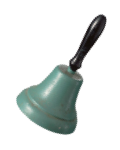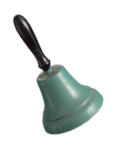In 1896, the King and Queen of Siam were treated to a lavish lunch by Teochew tycoon Seah Liang Seah, at Bendemeer House off Serangoon Road. This was not the first time that the stately mansion embodying Chinese, Malay, and European influences had hosted royalty or prominent people. Originally called Whampoa House, Bendemeer House was originally designed and built in 1840 by Whampoa (also known as Hoo Ah Kay), a prominent Chinese leader who maintained a tradition of hosting magnificent parties. After his death, the mansion was bought over by Seah Liang Seah, who renamed the house. He carried on Whampoa’s tradition and soon became well-known for his gracious hospitality at his magnificent home, which had a ballroom, a tower, and sweeping grounds, surrounded by a vast estate of plantations. A colourful character and entertaining host, Seah Liang Seah would have his guests participate in activities such as miniature rifle shooting, guessing games, and even whistling competitions where the whistler had a biscuit in his mouth, while a teammate had to guess the song!
In 1964, the government acquired the historic building and the 30-acre estate (around 30 football fields in size) on which it stood for the development of the Kallang Basin housing and industrial project. The building was soon demolished to make way for the development of Boon Keng estate. Today, the mansion and estate are no more, and only the names Bendemeer and Whampoa remain. Knowing these names is good, but knowing the stories behind them is even better.
Narrating Local “Grandfather Stories”
I share this anecdote of my great-great-granduncle Seah Liang Seah and his beautiful house because I believe it is important to know these “grandfather stories”. Professor Tan Tai Yong once rightly commented: “Each of us needs to know our country through "grandfather stories”. Through Seah Liang Seah’s “grandfather story” and the stories of others, such as his sons Seah Eng Keong and Seah Eng Tong, we can better understand who we are and where we come from.
Like his father Seah Eu Chin (1805–1883), popularly known as the “King of Gambier and Pepper”, Seah Liang Seah (1850–1925) contributed much to Singapore. He was not the king’s eldest son, but eventually became the head of the family, when his elder brother Seah Cheo Seah died in 1885, only a few years after their father passed away. Among his many contributions, Seah Liang Seah was the first Singapore-born Chinese member of the Legislative Council of the Straits Settlements in 1883; member of the Municipal Commission; and President of the Gambier and Pepper Society. In 1900, Seah Liang Seah—and several others, such as Tan Jiak Kim, Dr Lim Boon Keng, and Sir Song Ong Siang—founded the Straits Chinese British Association (SCBA). It aimed to be the voice for the Straits Chinese, who started seeing themselves as a distinct group, albeit within the colonial establishment. The SCBA eventually evolved to become what is known today as the Peranakan Association of Singapore.
Seah Liang Seah’s brothers also contributed much to society. For instance, his youngest brother Seah Peck Seah (ca.1857–1939) was a talented merchant, running the Chin Huat Hin Oil Trading Company, and community leader who served as a Justice of the Peace and the first Honorary Treasurer of the SCBA, holding the office for four years. He also strongly supported local education. In April 1899, the foundations for the Singapore Chinese Girls’ School were established; Seah Peck Seah, alongside Sir Song Ong Siang and Dr Lim Boon Keng, was on the first committee of the school.
Seah Liang Seah’s sons were also prominent personalities, and two of them stood out—Seah Eng Keong (b.1873) and Seah Eng Tong (1880–1940). In addition to exporting canned pineapples, businessman Seah Eng Keong bottled Sembawang Hot Spring’s mineral-rich water for sale. He was a captain of industry focusing largely on business success. Conversely, one of his brothers, a gentleman called Seah Eng Tong, focused largely on contributing to society. He was variously Justice of the Peace; a member of the Poh Leung Kuk committee (established by the Chinese Protectorate, this society for “the protection of virtue” served as a refuge for victims of forced prostitution and a home for unwanted, ill-treated, or destitute girls); and a member of the Chinese Advisory Board. He often donated to help the poor and needy, such as contributing to a non-European unemployment fund in 1922; a YWCA lunch and rest room fund in 1922; the child welfare society in 1930; a Ceylon flood relief fund in 1930; the Asiatic unemployment fund in 1930 and 1931; the St. Andrew’s Mission Hospital in 1931; and the non-European relief fund in 1932.
Reflecting on “Grandfather Stories”
Looking at the stories of various extended family forefathers, it is clear that even as they advanced their business interests, they always gave back to society. Most significantly, in a time where many were sojourners, returning home to China after they had made their fortunes, they stayed and built institutions in society. Many other Seahs sailed from China to Singapore to join them. While most of these stories have been unfortunately lost in the mists of time, these stories deserved to have been documented. As the Greek poet Pindar once rightly said, “Unsung, the noblest deed will die.” So, there is great value in “grandfather stories”. Collectively, they form a rich, interwoven tapestry which will help us understand who we are as a people, and what values and traits we stand for.
Clan associations which promote mutual help as well as social and cultural activities, including Chinese culture and heritage, are in a sense a living repository of some of these stories. This is true not just of large and established associations, such as the Ngee Ann Kongsi which my ancestor Seah Eu Chin founded in 1845, or the Teochew Poit Ip Huay Kuan founded in 1929, but also smaller associations, such as the Singapore Seah Clan Association. It was established in 1950, when Singapore was still a British colony. Other than its Teochew-ness, a commonality it shares with the larger, more established associations is that all three have survived till today, despite various common challenges, such as difficulties in attraction and engagement of youth, digitisation and technological changes, or sustainable leadership renewal.
We digitally and symbolically commemorate the 70th anniversary of the Singapore Seah Clan Association, given the public health challenges posed by the COVID-19 pandemic, which has made large-scale public gatherings or celebrations impossible. As we do so, it is worth remembering those who have come before us. Having a sense of history helps. The current President of the Singapore Seah Clan Association Mr David Siah Keok Ann (b.1955) is reportedly the only restorer of antique safes in Singapore, a heritage trade he learnt from his father, who learnt the craft from his father before him. Other than antique safes and Chinese historical documents, his collections also include documents from the Syonan period, which he generously loaned to the National Heritage Board, and are currently displayed at the Old Ford Factory. As a result, the clan association’s leadership has supported my speaking and writing journey. If younger clan members can feel inspired to step up and contribute in various fields, whether in business, public service, or culture and heritage, they will one day inspire future generations.
About Shawn Seah Li Song
Shawn Seah Li Song is a public speaker and author of several history books, Seah Eu Chin: His Life and Times (2017), Leader and Legislator: Seah Liang Seah (2019), and My Father’s Kampung: A History of Aukang and Punggol (upcoming). A member of the executive committee of the Singapore Seah Clan Association, he holds the position of Chairman (Youth). He can be reached at his website: https://shawnseah.com/.
Enjoyed this programme? Let us know what you think here and receive a $5 Grab Food voucher*.
*limited to the first 500 complete responses |


